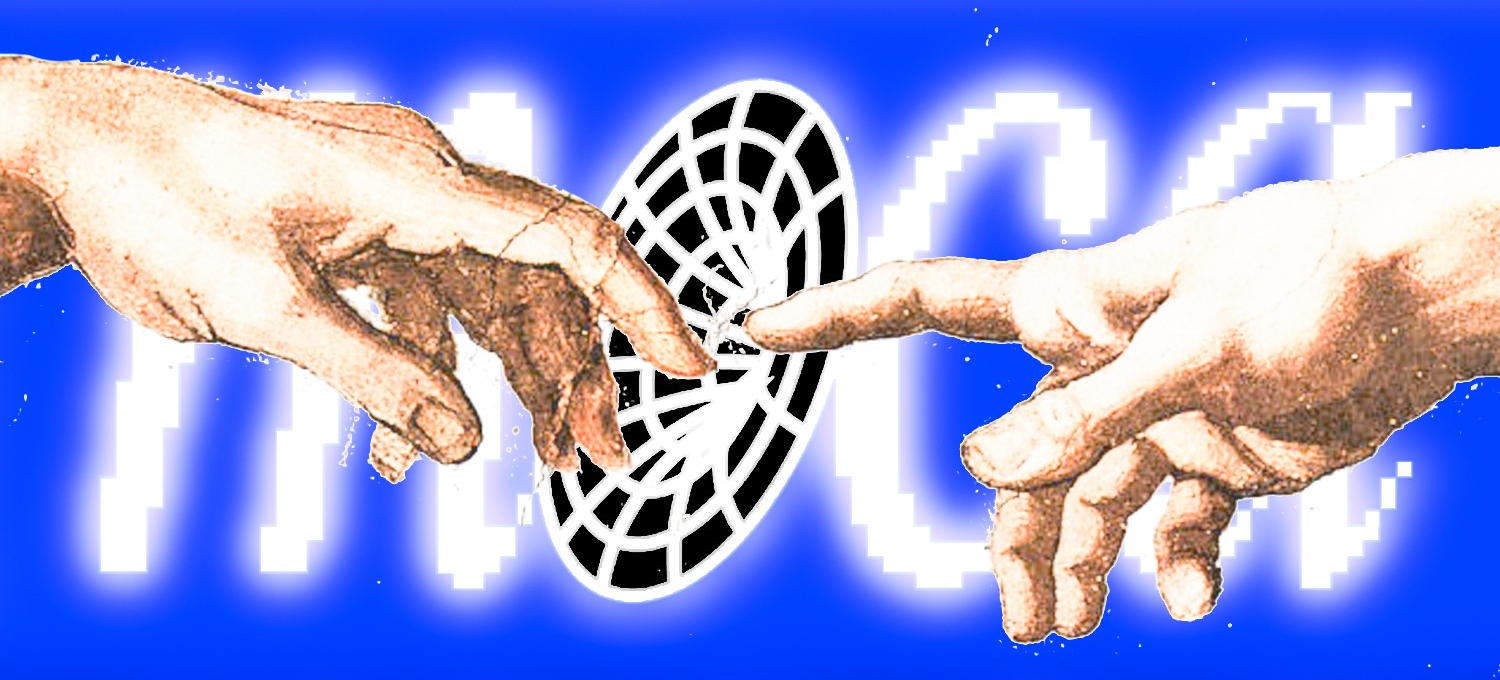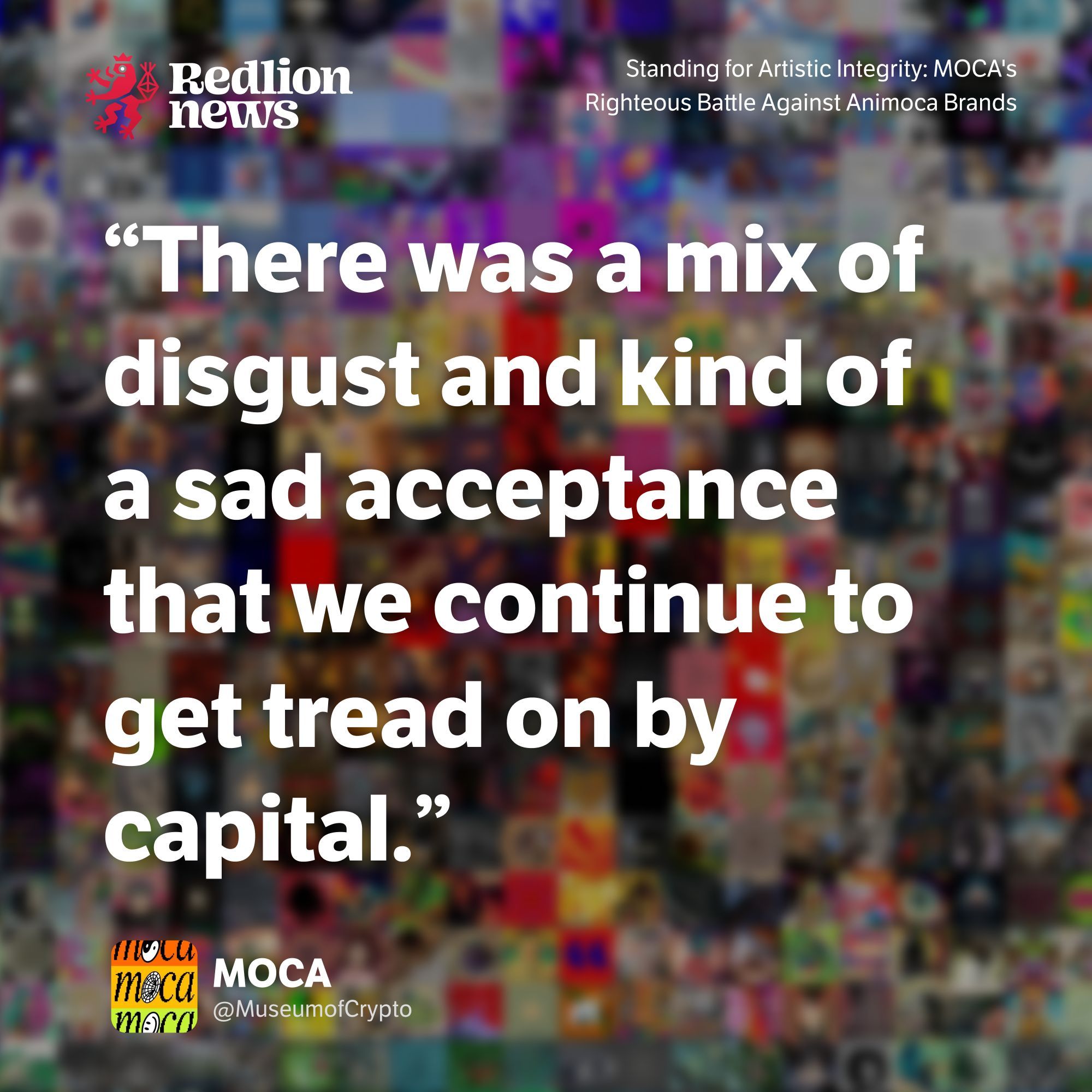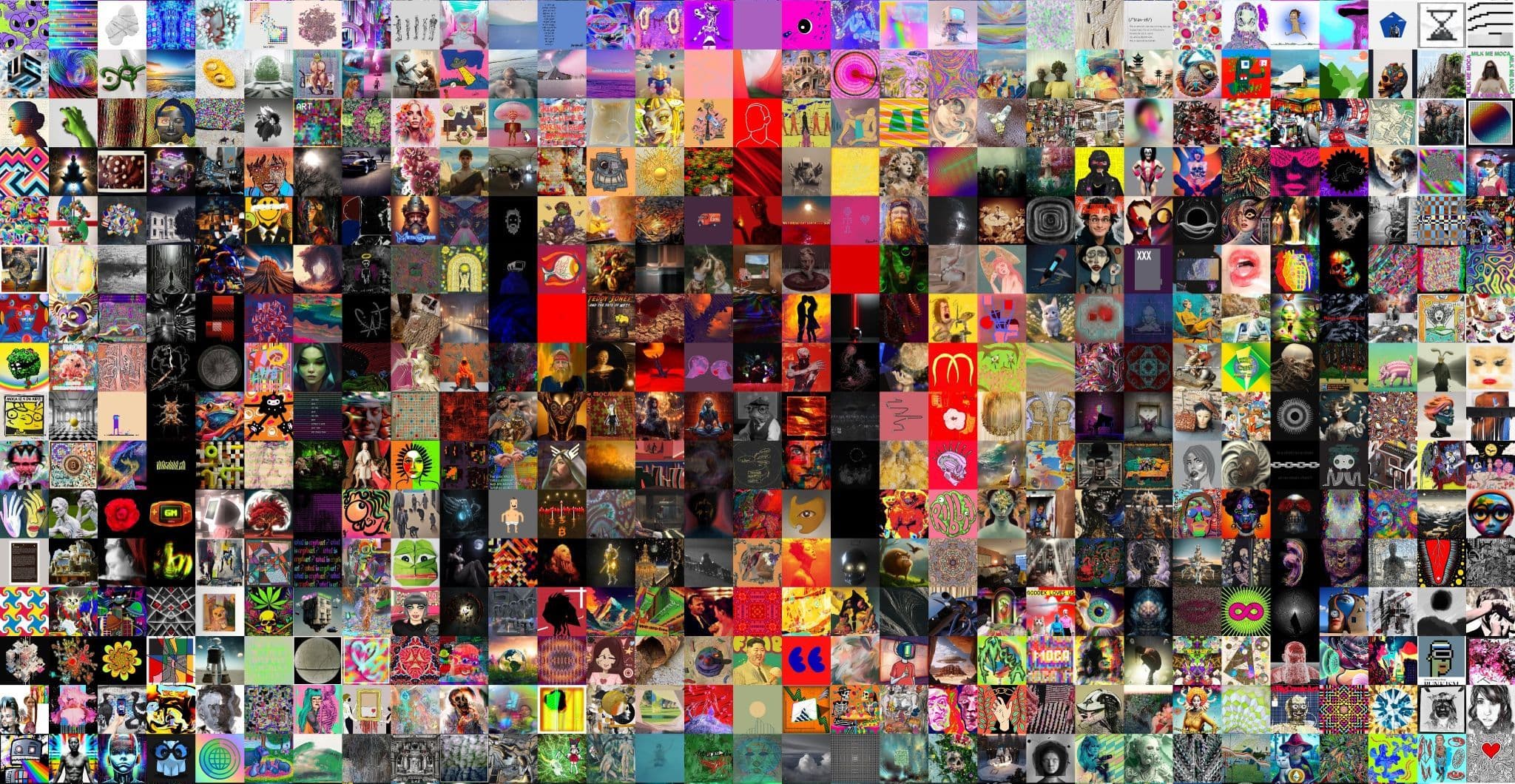The crypto art world is witnessing a significant confrontation between MOCA (Museum of Crypto Art) and Animoca Brands, the heart of this dispute lies in what MOCA sees as blatant intellectual property infringement, raising critical questions about respect, power dynamics, and ethics in the burgeoning Web3 space.
MOCA's Identity: A Fusion of Digital and Cultural Artistry
MOCA's branding since January 2021, has established a unique identity that resonates with a wide range of cultural influences, drawing inspiration from early internet art, rave culture, and punk ideologies, the branding created by Christine Sanford at y3k studios was envisioned to symbolize the flattening of art distribution and the democratization of ownership in the crypto art world.

This identity was not just a marketing strategy; it represented a deeper commitment to challenging the traditional hierarchies in art and advocating for a more inclusive and accessible art world, especially in the crypto space.
The Infringement Conflict: '#mocaverse' and '$MOCA'
MOCA's accusation against Animoca Brands centers on the use of '#mocaverse' and '$MOCA,' MOCA introduced their world in August 2022, a creative venture that was a significant milestone for them.
The @MuseumofCrypto experience is getting painted with culture and imagery of outstanding projects from the web3 space. Lets tag the skyline 🤘@poapxyz @LensProtocol @DoinGudHQ @BanklessHQ
— reneil.eth 🕳🐇 (@reneil1337) October 10, 2022
Which communities are next? Tag em 🔥https://t.co/1FLTpNZoLM pic.twitter.com/ssy2Zodacc
However, the emergence of Animoca Brands' similar branding in October 2022 raised alarms, further exacerbating the situation were rumors that Animoca Brands was promoting an investment opportunity for a $MOCA token in 2023, according to MOCA, Animoca Brands was fully aware of their existing token and its significance in the crypto art community, yet chose to pursue a similar path.
MOCA's Reaction: A Blend of Outrage and Resignation
The response from MOCA to these developments was a complex mix of emotions, on one hand, there was a sense of outrage and disbelief at what they perceived as a blatant disregard for their established brand and community, on the other hand, there was a sense of resignation, a reflection of the harsh reality where smaller, independent entities often find themselves overshadowed by larger, more financially powerful corporations.

This sentiment echoes a broader sentiment in the digital art world, where the encroachment of capitalistic interests on artistic and cultural spaces is a growing concern.
Legal Recourse: A David vs. Goliath Scenario
Faced with what they see as a clear overstepping of boundaries by Animoca Brands, MOCA expresses doubt about the feasibility of legal recourse, the situation presents a classic David versus Goliath scenario, where the smaller entity, despite having a legitimate grievance, feels powerless against a much larger adversary.
This power imbalance highlights a critical issue in the Web3 community – the need for mechanisms that protect the rights and creations of smaller players in the face of corporate might.
MOCA's Stand: A Fight for Ethical Integrity
Despite the challenges, MOCA refuses to be silenced or sidelined, they are determined to stand up against what they consider an ethical violation by Animoca Brands.
🔥🚨DRAMA🚨🔥
— MOCA - Museum of Crypto Art 🔜🕳🐇 (@MuseumofCrypto) January 18, 2024
Shame on @animocabrands for habitually infringing on our IP with first #mocaverse and now $MOCA 🤬
When potential investors told them we existed, you know what they said?
WE DON'T CARE 😱
Well lets show them WHY they should care about crypto art...
Receipts👇🧵 pic.twitter.com/XQv3v11Wry
This stance is not just about protecting their own interests; it's about setting a precedent in the crypto art world, MOCA's fight is emblematic of a larger struggle within the Web3 community – a struggle for recognition, respect, and ethical conduct in a rapidly evolving digital landscape.


